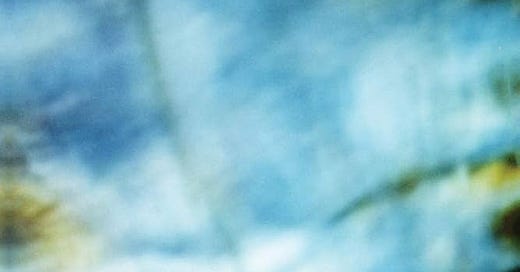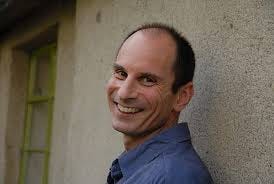“What will you say to him?”
When I was in high school I worked summers in an immunology lab, and one day Avinash, the superhumanly patient postdoc with whom I’d been partnered, asked me — after describing a particularly intricate cellular mechanism — whether I really understood what he’d just explained.
“Well,” I said. “I couldn’t explain it to my grandmother, but I think I get it.”
I meant to convey a sense of lofty insider-ism (perhaps ordinary people could never be made to understand such complexity, but I now resided at an altitude at which ordinary people could scarcely breathe). But rather than looking impressed, Avinash looked stricken. “Ben,” he said, with a solemnity that chills me even now. “If you couldn’t explain it to your grandmother, then you don’t understand it at all.”
This standard has stayed with me much longer than almost anything else I learned in the lab. When I’m groping my way through an explanation of interest rates, or trying, for the hundredth time, to understand gravity, I ask myself: Could I explain it to my grandmother? (By which I now mean, Could I explain it to myself? The grandmother is calling from inside the house.) A dismaying portion of the time the answer comes back, No, you absolutely couldn’t. The world, or that portion of it, is doomed for the time being to remain behind smudged glass.
So when I come across an explanation of something complicated that does pass the grandmother test, it cheers me as few things can. I know of no book that passes the test as impressively as Rob Burbea’s book on meditation, Seeing That Frees.
Meditation is, as a subject, singularly clarity-resistant. Like music or dance it is in its essence non-verbal, and so language, that battered Lego collection, can only build clumsy approximations. Sit still and pay attention to your breath, sure, but what exactly are you supposed to feel as a result of all this sitting? You know it isn’t merely relaxation — the smug, transformed retreatants assure you that it’s far, far more than that. But what is it? You could read dozens of meditation books — I have — without getting much more than a reassuring pat on the head: you’ll know it when you get there. Neither my grandmother nor Rob Burbea would settle for that.
So what Burbea sets out to do in Seeing That Frees is to give not so much a manual on how to meditate (though there’s plenty in it about how to meditate) as an explanation of why to meditate. Here, in the crisp and conversational prose that seems to be the birthright of the British people, is a systematic articulation of what you will actually come to understand if you spend a large chunk of your life sitting still and silent. Here is what the illusion of the self actually means; here is why emptiness isn’t merely an inscrutable bit of ancient poetry. The feeling is of a politician who, fed up with some allegation born of misunderstanding, decides to stay at the podium until every last question has been answered.
My favorite bit comes early on, when he’s explaining that the goal of meditation isn’t merely to be with phenomena (Just taste the raisin), but to be with phenomena in order to see that they are illusory.
Imagine that one day when out walking you turn a street corner and suddenly hear a loud and menacing growling nearby. A ferocious and hungry-looking tiger appears in front of you seemingly about to leap. The distress of a reaction of terror there would be quite understandable. But if you notice on closer inspection that this tiger is not real, that it is actually a holographic projection with accompanying sound recording from a nearby hologram projector, the fear and the problem simply dissolve.
It might, in other words, be marginally helpful, upon encountering a tiger, to focus madly on the texture of its fur; but it would be a good deal better to see that the tiger isn’t there at all.
I won’t here get into the various objections (But what if you encounter a non-holographic tiger? Please tell me you aren’t saying that nothing is real?); rest assured that Burbea gets to every last one of them.
I will say, instead, that a few pages later Burbea returns to the tiger — and does so in a way that made me realize, as soon as I read it, that this would be one of those books that I never truly put away.
Let’s elaborate our illustration of the holographic tiger… Imagine that you enter a room that is dark except for a lamp in one corner. There you see your friend, huddled next to the lamp in a state of great anxiety and staring transfixed at the wall opposite. “A wolf! A wolf!”, he is whimpering in fear.
(You may, keen reader, have noticed that the tiger has transformed into a wolf, but fear not, Burbea has his reasons.)
Turning to look at the wall, you see a large silhouette of a wolf but very quickly realize that it is just the shadow of your friend’s hands, cast by the lamplight on the wall. In his fear he is completely unaware of his hands or how he is holding them, or the fact that the wolf shape is merely their shadow. What will you say to him?
There’s so much that I love about this passage. I love the content, first of all — the clear and simple visualization of how a person might be intimately implicated in his own suffering. I love that he felt the need to double back to clarify and complicate his earlier image, like a professor interrupting himself to return to the chalkboard. I love that he was so attentive to his imaginary scene that he decided (since the shadow of a wolf is a lot easier to imagine being cast by one’s hands than the shadow of a tiger) to introduce an elegance-diminishing, clarity-enhancing animal swap.
But I love most of all that closing question:
What will you say to him?
Your poor friend is, after all, in rather an absurd position. He is literally afraid of his own shadow. Imagine actually encountering this person. You wouldn’t read him a bit of Rumi, would you? Or promise to email him some information about your retreat center? You would alert him as quickly and clearly as possible to his actual condition. You would thrust into his trembling hands (which, come to think of it, bear a striking resemblance to your grandmother’s) this wise and wonderful book.





I just ordered the book. Thank you!
Sounds like a primer I should have on my shelf too!